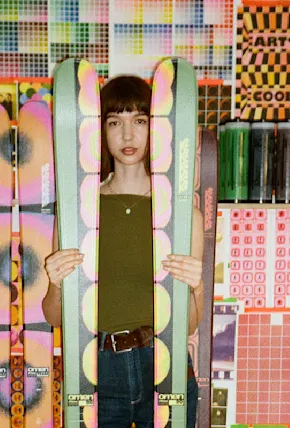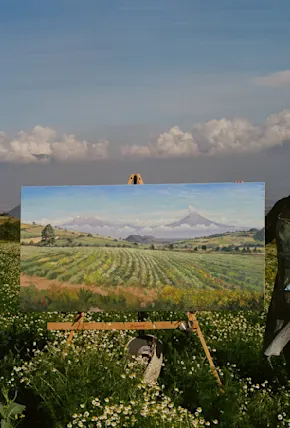Before all this Smith was a veteran pro, with standout parts in numerous iconic videos that defined snowboarding in the 2000s. His raw riding style and unique approach to what snowboarding could look like and where it could be done made the Pacific Northwest native one of the most influential snowboarders in the industry. After a brief hiatus—spent in LA making art and chasing birds—Smith returned to snowboarding in 2010 in pursuit of powder, and perhaps rediscovering what drew him to the activity in the first place. A particularly dry January in Lake Tahoe led to a bit of cabin fever, which led to the idea of hand making snowboards. As soon as the plywood creations were deemed rideable Smith’s art brain clicked on and the concept grew into Spring Break, a functional art project mixing sculpture, painting, and snowboarding.

With the entire first run of Spring Break boards hanging in the Utah Snowboard Museum, Smith is now back in Portland, Oregon full time with his hands in many pots. “Ex-pro, snowboard shaper, brand ambassador, artist—I don't know what label is best,” he says. “I’m just following my passions at the best capacity I can.” In doing so he and a few friends have grown Spring Break into a genuine brand with global influince. And each board is still made by hand.
The process is really more simple than you might think. The shape is drawn on and cut from a sheet of balsa birch marine-grade plywood. A single stance option is eyeballed and marked, making each board unique to its owner. After T-bolting binding inserts comes the glass binding. A couple coats of resin does the trick, soaking into the wood and fiberglass to create a strong bond. After all is dry, Smith sands off the excess and then it gets the secret ingredient, Zep high-traffic floor polish—Smith is a master of making due with what minimal equipment and materials are available—and a nice hot wax. Last is the top sheet, painted however he’s feeling that day. The graphics and shapes inform the names: Slime Time, Wabi Sabi, Mellow Yellow, Powder Pill, Beetlejuice, Dildon’t, etc.
The end result is more or less a functional piece of art. Because of this, Spring Break snowboards don’t really look like snowboards. At times they resemble what Tim Burton would have designed—had his first name been Jake and he’d grown up in Vermont—or possibly Timothy Learly. Others take more traditional shapes, albeit exaggerated in almost every direction. They use birch plywood, fiberglass and resin, like a surfboard, and an archaic DIY board press likely designed in 10 minutes on the back of a bar napkin. And that’s the beauty of Spring Break, it’s like nothing else out there. At least it was at its genesis.
As Spring Break began to make waves with various art shows, magazine articles, and collaborations, the kids weren’t the only ones watching. So too were the marketing departments of the mega corp ski and snowboard brands. Five years ago if you surveyed the entire industry’s offerings you could find a few fishes, a swallow tail or two, and maybe even a ready-made split, but nothing too “weird.” Fast forward to the 2015-16 season and nearly every brand has at least two new, unconventional shapes. And a few look curiously like Smith’s original designs. But that’s life, as Smith will admit.












